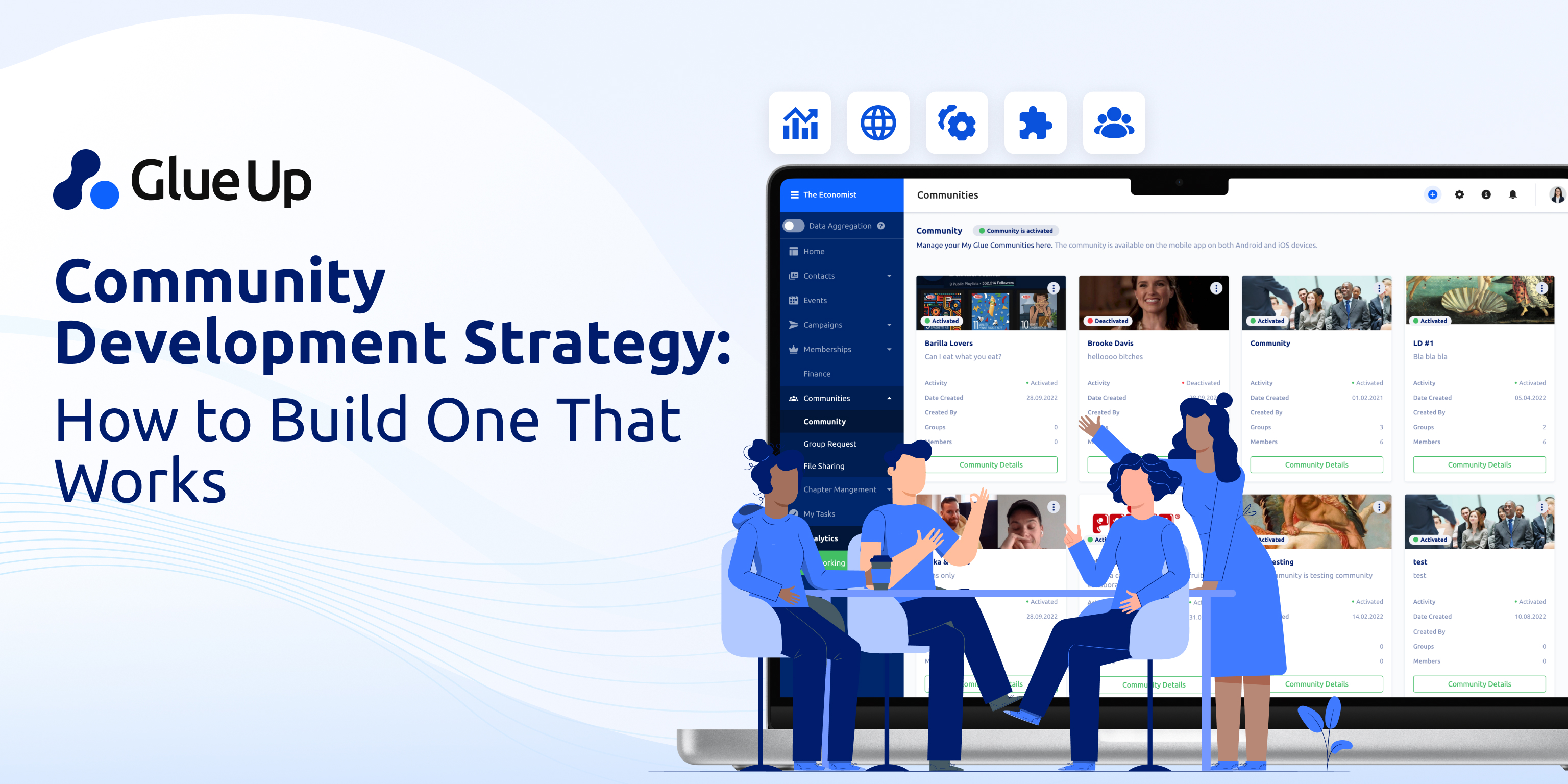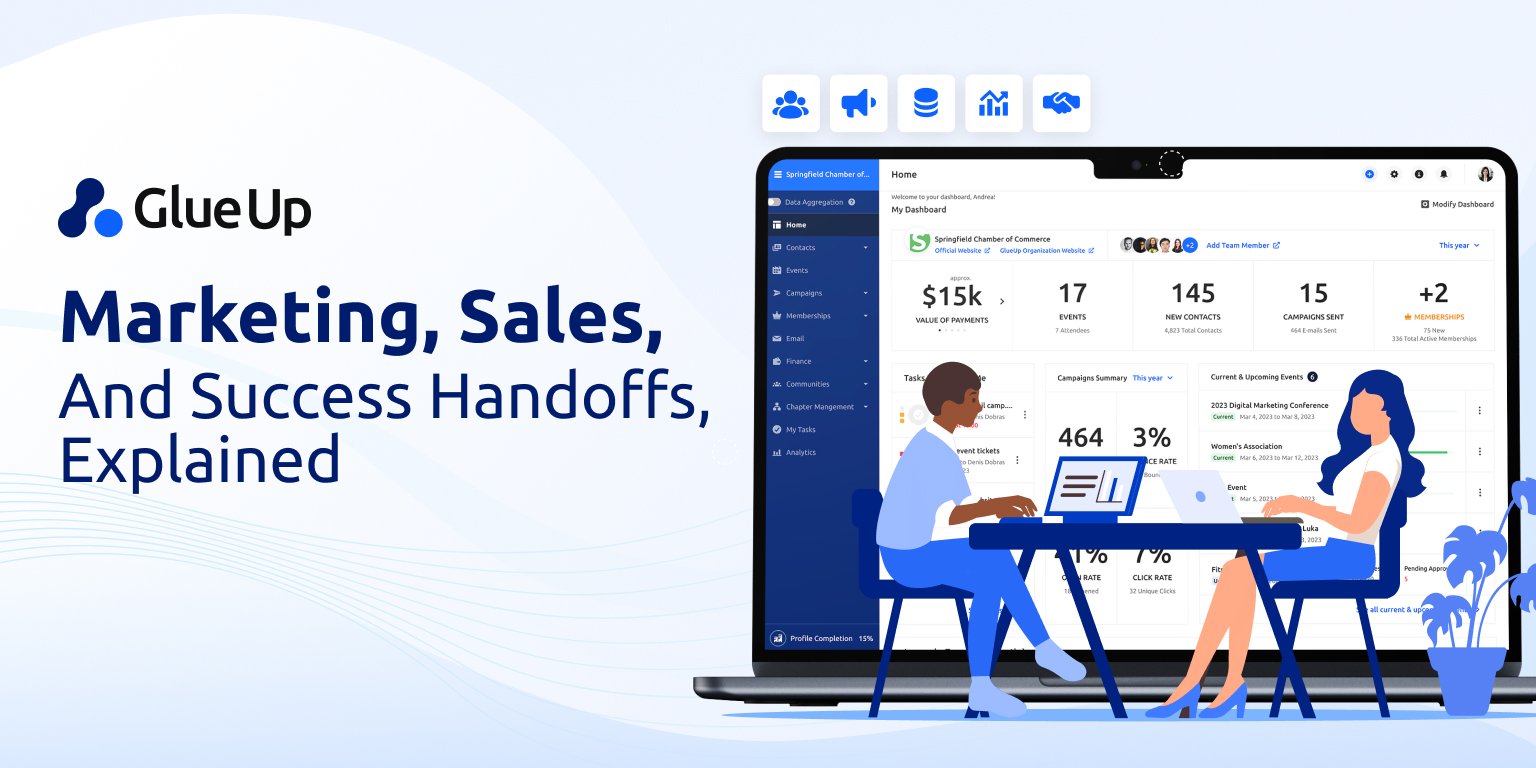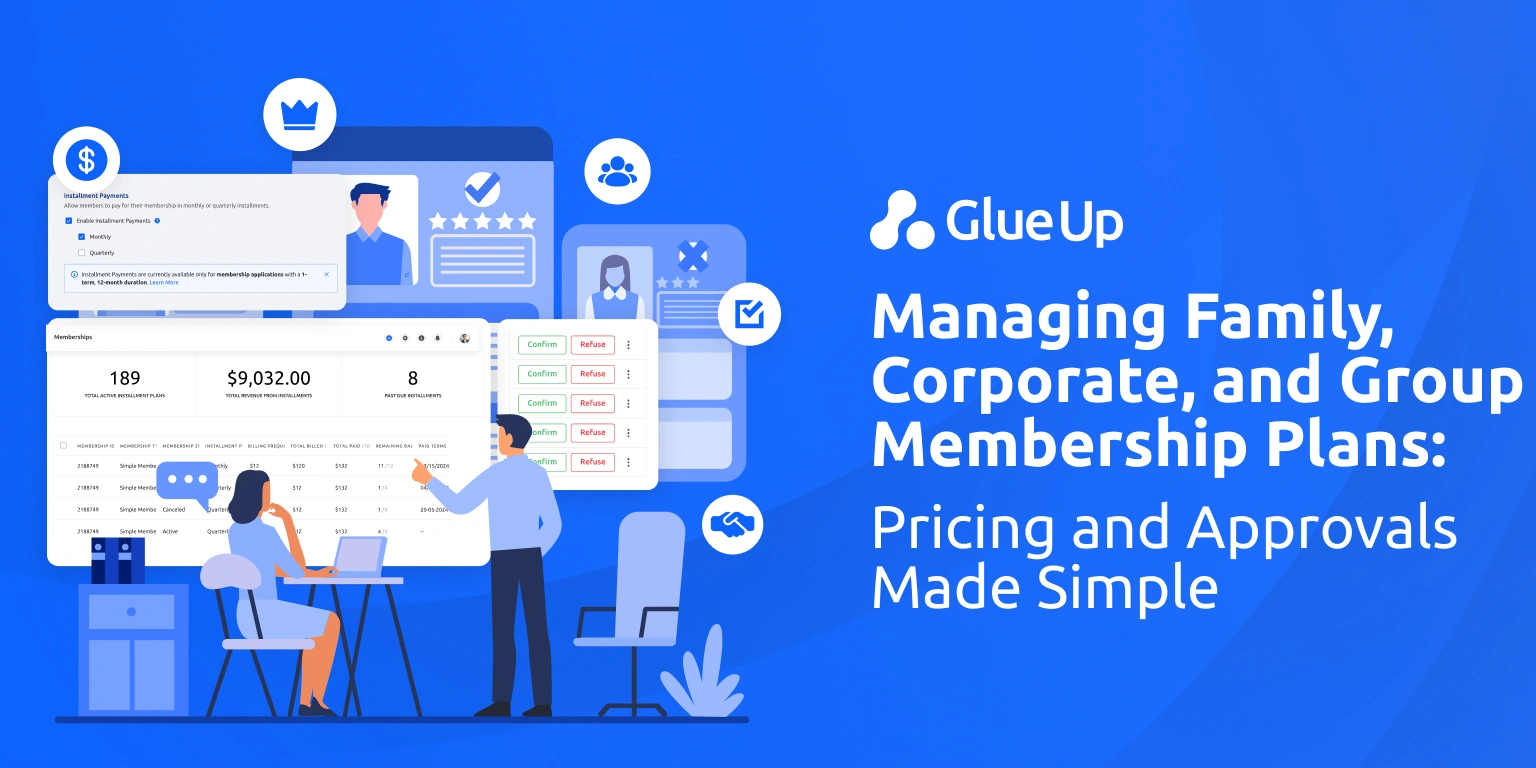
You can feel it when a community loses its rhythm. Member renewals slow, events underperform, and what once felt alive turns into a space people visit less often. The question executives usually ask at this point is tactical, “What event should we run next?” or “Do we need another newsletter?”, but those questions miss the point. What is really missing is a community development strategy. Without a strategy, even the best programs are short-term fixes. With one, you can build something durable, measurable, and genuinely valuable to both members and partners.
Associations, chambers, and membership-based organizations are in the perfect position to lead this kind of work. Unlike one-off groups or ad-hoc committees, you already have infrastructure, trust, and a reason for people to gather. What you may not have is a plan that ties all of it together and makes the value obvious to your board and sponsors. That is where building a strong community development strategy comes in.
Key Takeaways
A winning community development strategy begins with an asset map: identifying member skills, industries, spaces, and existing networks; so, programs build on strengths rather than just fixing problems.
Associations and chambers thrive when they take on the backbone role: setting a common agenda, creating shared metrics, and coordinating partners with consistent communication.
Tight-knit groups feel safe, but growth comes from bridging ties across industries, age groups, and geographies. Intentional design of cross-segment connections multiplies opportunity and value.
Boards and sponsors need more than “good vibes.” Use logic models to connect inputs to outcomes and SROI frameworks to show tangible value like contracts, retention gains, and time saved.
Apply Ostrom’s principles: clear boundaries, fair processes, graduated sanctions, and nested governance; to keep community participation strong, whether online or in person.
Quick Reads
Association Management Made Simple: Top Techniques • Glue Up
Tips for Choosing an Association Management Company • Glue Up
What Community Development Strategy Means for Associations Today
Let’s get one thing clear upfront: a community development strategy is not a calendar of events. It is not a Slack channel. It is not even just a set of benefits listed on a membership brochure. It is a deliberate plan for how your organization uses assets, partnerships, and systems to create value that compounds over time.
The best community development strategy begins with an asset map. Instead of asking what is broken, you identify what strengths already exist. In associations, those assets are often the members themselves, their skills, industries, networks, and influence. It can also be spaces, platforms, and even intangible assets like reputation.
When you map these strengths, something shifts. Instead of deficit language (“we lack volunteers, we lack funding”), you move into capacity language (“we have members in 30 industries, we have young professionals eager to contribute, we have venues willing to host”). That framing invites action instead of hesitation.
The second part of the modern strategy is about backbone leadership. Associations and chambers are uniquely positioned to act as the backbone organization, the one that sets a common agenda, measures progress, communicates consistently, and holds the structure together. Without that, every initiative becomes a silo, and the community never compounds its value.
Five Design Choices That Predict Success
Every thriving community development strategy shares five design choices. Miss one, and your results collapse. Nail them all, and the system builds momentum.
Choose Assets Before Initiatives
The temptation is to jump straight into a program. But starting with initiatives without mapping assets is like writing a budget before you know your revenue. The smarter approach is to run an asset map workshop. Bring members, staff, and even local partners together. Identify who has what skills, which businesses are open to partnerships, what spaces are underused, and what networks people already tap into.
Once assets are visible, your initiatives almost write themselves. If ten members are already mentoring students, you can formalize that. If three corporate sponsors are already supporting sustainability, you can anchor events and communications around that shared focus.
Set a Common Agenda and Shared Metrics
Borrow from the collective impact model here. If your members, board, and partners are all chasing different outcomes, you will never create alignment. A strong community development strategy defines a common agenda (“we will grow supplier diversity opportunities for local businesses”) and couples it with shared measurement (“we will track the number of contracts signed through member introductions”).
Glue Up’s dashboards make this practical. You can track those introductions as CRM opportunities, tag them in events, and generate quarterly reports without creating new systems from scratch.
Engineer Bridging Ties
Sociologists talk about bonding versus bridging ties. Bonding ties are the close relationships people already have friends, colleagues, long-term collaborators. Bridging ties are the connections across industries, age groups, or geographies. They are weaker but more powerful for spreading ideas, finding jobs, and discovering opportunities.
Many communities accidentally overinvest in bonding ties. They create safe, tight groups that feel good but do not expand opportunity. A better community development strategy engineers bridging ties on purpose. Think cross-chapter mixers, multi-industry panels, or mentor programs that match senior and junior members.
Write House Rules the Ostrom Way
If your organization runs forums, online groups, or collaborative projects, governance will make or break trust. Economist Elinor Ostrom outlined how communities successfully govern shared resources: clear boundaries, local rules, transparent dispute resolution, fair but graduated sanctions, and nested governance when scale grows.
Apply this directly. Your online forums should have clear user boundaries (who can post), visible rules (what is acceptable), and a fair process for handling disputes. Glue Up’s community permissions and moderation tools already map to this design.
Pick a Practical Operating Model
You do not need to reinvent how to structure programs. Proven models exist. The CMX SPACES framework helps you define whether your community’s primary role is support, product, acquisition, content, engagement, or success. The Orbit Model helps you map levels of participation: who is in the core, who is in the outer ring, and how “gravity” pulls them closer.
Use these models to decide which programs to invest in and how to measure them. Inside Glue Up, that might mean running different Smart Lists for each orbit ring and setting automated campaigns that move members from outer to inner circles.
Programs That Compound Value
A good community development strategy is not theoretical. It lives in programs people can join, measure, and expand. Here are examples that map to the five design choices.
Peer Circles
Inputs: volunteer leaders, meeting space, Glue Up community groups
Outputs: monthly meetings, shared notes
Outcomes: retention lift of 8 percent among participants, higher satisfaction scores
Supplier Showcases
Inputs: member businesses, Glue Up event registration
Outputs: quarterly showcases, spotlight in newsletters
Outcomes: direct contracts won through member-to-member introductions, measurable through CRM opportunities
Mentorship Exchanges
Inputs: senior and junior members, Glue Up’s member directory
Outputs: matches, structured programs, automated check-ins
Outcomes: improved first-year renewal rate, more cross-generational engagement
Policy Roundtables
Inputs: industry experts, event tools
Outputs: white papers, advocacy campaigns
Outcomes: elevated public profile, stronger sponsorship pipeline
Each program can be run inside Glue Up, tracked through events, measured in CRM, and amplified through the community platform. What matters is not the program itself but the logic model behind it: inputs → activities → outputs → outcomes.
Measuring Beyond Anecdotes
Boards and sponsors do not respond well to “the vibe is good.” They need evidence. A strong community development strategy bakes in measurement from the start.
Logic Models: Clarify the chain of impact before launching a program.
SROI (Social Return on Investment): Estimate the dollar value of outcomes: time saved, deals closed, opportunities created.
OECD Evaluation Lens: Report results against relevance, coherence, effectiveness, efficiency, impact, and sustainability.
Glue Up makes reporting easier. You can export dashboards, tag activities with outcomes, and generate one-pagers for board packets without reinventing reporting tools.
Moderation and Governance That Protect Trust
Your community is only as strong as its trust. When members feel unsafe, unheard, or ignored, they leave quietly, and they rarely come back. Applying Ostrom’s commons principles protects that trust.
Clear boundaries: Who is in the community, and why?
Transparent rules: What behavior is expected?
Fair processes: How are disputes handled?
Graduated sanctions: Start with reminders, then escalate if necessary.
Nested governance: Let local chapters manage their groups under shared policy.
Glue Up’s role-based permissions, moderation tools, and nested chapter templates give you these levers without requiring constant staff intervention.
Case Vignettes That Prove It Works
Association Example: A national trade group ran an asset map and discovered dozens of members already working on sustainability. By focusing its strategy there, it grew sponsorship revenue by 30 percent in one year.
Chamber Example: A chamber launched cross-industry mixers to build bridging ties. Within six months, 40 percent of attendees were first-timers, and renewals rose among younger businesses.
Local Partnership Example: A regional org used Glue Up to act as the backbone for a supplier diversity initiative. By tracking contracts in the CRM and publishing quarterly reports, it secured a multi-year funding commitment from sponsors.
Start This Quarter
The best way to avoid being overwhelmed is to start small. A community development strategy can begin with four steps:
Map Assets: Run a 30-day directory tagging project.
Set One Shared Metric: Pick something you can measure, like “number of first-time event attendees.”
Launch One Bridging Program: Host a multi-industry mixer or mentorship pilot.
Report Results: Share a one-page OECD-style summary with your board.
Glue Up gives you the infrastructure to run all four steps in one place: community forums, event tools, email campaigns, CRM tracking, payments, and mobile apps. The AI Copilot even helps you draft the communications along the way.
Closing Thought
Communities do not fail because people stop caring. They fail because no one built a system to turn care into progress. A community development strategy is that system. It is the difference between a group that drifts and a community that compounds value over years.
If you want to see what this looks like in practice: asset mapping, bridging ties, governance, metrics; all running in one integrated platform, it is time to look at Glue Up. Book a demo today and start building a strategy your members, partners, and board will never question again.



